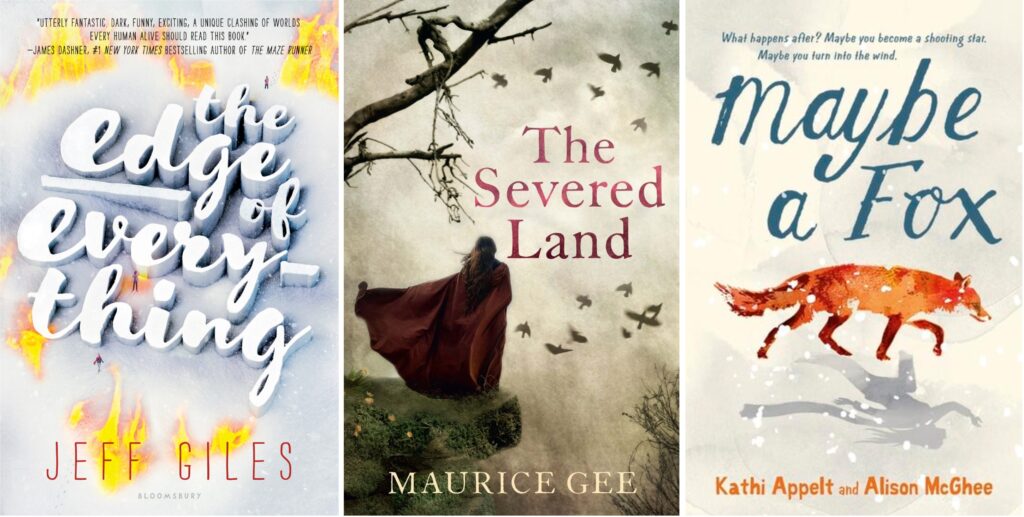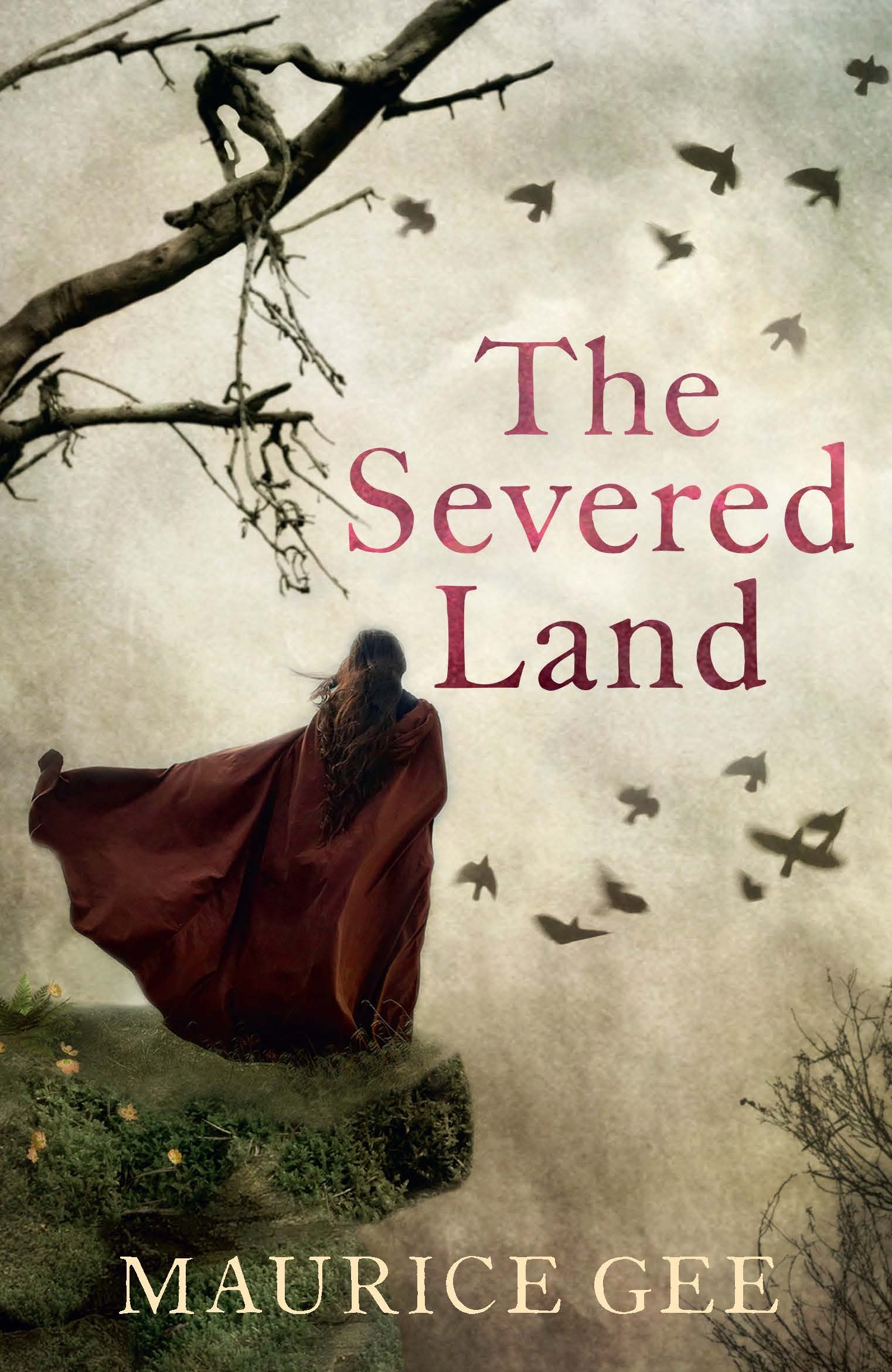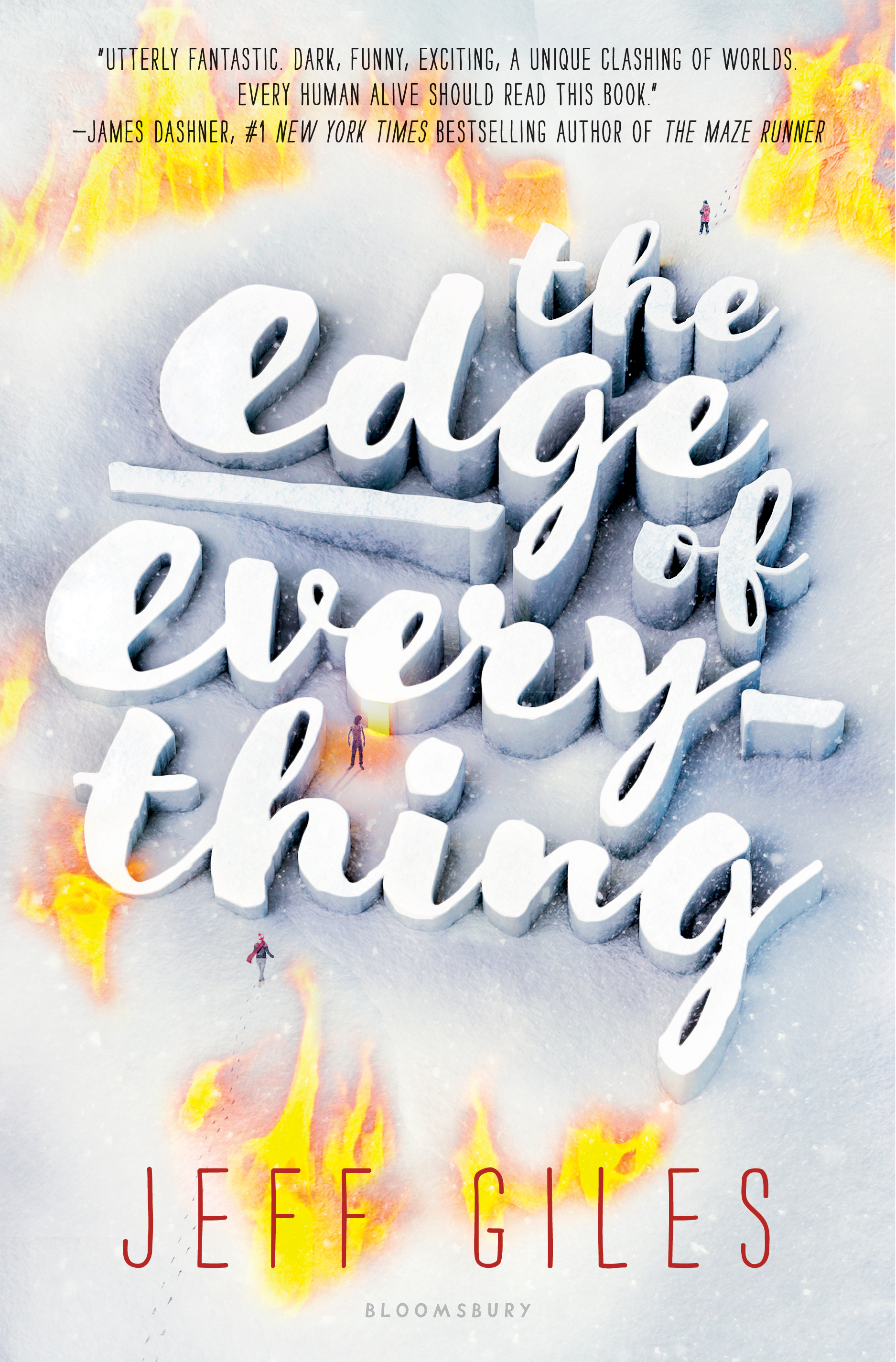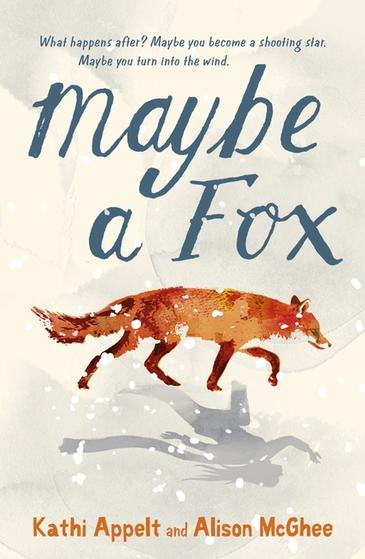Briar Lawry reviews Maurice Gee’s latest, The Severed Land, as well as The Edge of Everything by Jeff Giles and Maybe a Fox by Kathi Appelt and Alison McGhee.

There are a great many high-calibre children’s authors in the world who manage to do new and exciting things with fantasy – pushing the genre’s limits, reconfiguring our expectations of what the supernatural can be, taking us to places we haven’t yet been when we thought we’d seen everything. Recent months have been especially kind on this front, with the release of three engaging, intelligent fantasy novels covering the middle reader and teenage spaces.
Though they have no connection to one another, The Severed Land by Maurice Gee, The Edge of Everything by Jeff Giles and Maybe a Fox by Kathi Appelt and Alison McGhee are all glorious additions to bookshop shelves – and perhaps once you’ve read this review, your own bookcase, too.
The world may be fracturing in new and terrifying ways each day when we tune into the news or flick through a Twitter feed, but there are reasons to rejoice, too. And one of those reasons is that this year, 2017, we readers received an unexpected gift. A gift in the form of a new Maurice Gee book. Not just any Maurice Gee book, mind you – a fantasy novel for young readers. All our collective primary school memories reignited.
In the most basic fantastical setting terms, The Severed Land aligns more with Gee’s most recent kids’ books, the Salt trilogy, than with the novels of yesteryear. Under the Mountain and the O trilogy lurk in places where fantasy comes to our world, or where we follow a protagonist from our world into somewhere new. These more recent books exist in worlds entirely of their own.
Perhaps it’s childhood nostalgia creeping in, but there’s a particular kind of appeal about fantasy books that start off in a place you’ve been – or at least driven past at some point. By that particular metric, The Severed Land doesn’t quite have the same classic Kiwi childhood experience. There’s no fearful wondering whether Wilberforces live under your local hill, or if you can convince your parents to take you to Golden Bay on your next summer holiday, just in case you can find the right flower to take you to O.
But by every other count, the book is a heartbreaking work of staggering Gee-nius. There’s moments of rollicking road adventure. There’s a race of woodland folk whose origins are shrouded in mystery and upon whom the future freedom of the known world rests. There’s an affable rogue, à la Jimmy Jaspers, in the form of Mutch (who even has pals who say things like ‘dogshit!’). And then there’s Fliss, the girl with a storied past, who drives the narrative.
The Severed Land refers to a world split through by ‘the wall’. No heraldic capitalisation, just ‘the wall’. An invisible rupture across the landscape separating the land ruled by the despotic Five Families – Despiner, Morisette, Krohn, Carp and Dight – and the land north of the wall, where small numbers of free folk live in villages.
Relatively unusually for a fantasy novel, at least one aimed at a younger demographic, the era evoked is more 18th or 19th century than mediaeval, with soldiers wielding firearms rather than bows and arrows – and branded slaves work gum and cotton plantations.
There’s no explicit reference to colonisation or the methods by which enslavement of large proportions of the population has taken place, but Fliss – a former slave herself – does refer several times to being ‘black’, while antagonist-turned-ally Kirt – boychild of the Despiner Family – is white. The racial dynamics of this land are not fully realised, but they do seem to follow the conventions of our world’s own wretched colonial past – even if there are some poorly chosen character names, particularly the Morrisette crier called ‘Goook’.
But one minor character with a questionable name does not outweigh all the good that The Severed Land has to offer (especially when other minor characters have names that roll beautiful around the mouth, like ‘Zizz’, ‘Poddy’ and ‘Shoo’). It’s brimming with essential Gee-ness. It may not feel ‘new’ in the same way that Under the Mountain may have felt upon its release, but it’s a wonderfully realised world that has scope to expand into further stories – should Gee feel the need to renege on his ‘this is my last book’ statement again. But if it does end up a standalone story, it still stands strong. It has the essentials of a kids’ book – characters grow, learn, develop friendships in difficult circumstances, cross the boundaries of what is expected of them, stand up for what’s right and for their families (whether they are connected by blood or by chance). And it’s a highly worthwhile read for grown-ups looking for some newness and nostalgia rolled into one 187-page package.
It also carries the weight of grief and of loss, both for Fliss and for Kirt. But to say too much more on that front would be to spoil the book. Instead, let’s turn to two other recent books for young readers that throw a spotlight on the pain of loss – one skewed towards the young adult audience (The Edge of Everything) and one squarely in the middle reader bracket (Maybe a Fox).
The Edge of Everything by Jeff Giles can be heavy at times. Teenage protagonist Zoe has recently lost her father. At home in the wilds of Montana, she and her hippy-dippy mother and quirky eight-year-old brother are struggling to find their feet in their own different ways.
But this isn’t simply a tale of grief. It’s a fantasy novel – and Giles’ addition to the teenage paranormal canon has been to bypass the werewolves and vampires and supernaturally talented dystopic freedom-fighters and go straight to the depths of hell. Or more specifically, the ‘Lowlands’. X, the hitherto-unnamed, spookily attractive bounty hunter from the Lowlands, saves Zoe and her brother Jonah from by-the-book bad guy Stan, whose soul he’s been sent to snatch.
Of course, being a teen fantasy novel, X isn’t like your average inhabitant of the underworld. He’s an innocent, a young man born in the Lowlands rather than taken there for unsavoury behaviour – AKA he’s literal hellspawn – but still forced to live by the rules of the place. In the days between saving Zoe and Jonah and X’s return to the Lowlands, X recovers at the family home. Naturally, Zoe (17-year-old caving and Instagram enthusiast) and X (ageless-but-also-21-ish superhuman raised primarily by an undead Victorian murderess nicknamed Ripper because she tears her fingernails out to feel anything at all) fall in love. They just don’t realise it until they’re pulled apart by the ‘lords’ of the Lowlands.
The premise is a little silly, and some of the characters are caricatures of teenagedom in the mid 2010s. Zoe’s ex-boyfriend is called Dallas and says ‘dawg’ a lot; her best friend, Val, has half her head shaved, causing a lot of ‘triple takes’ from adults, and a passion for creating esoteric Tumblrs. And yet, it’s still a compelling book. Giles’ take on the underworld feels fresh, to some extent. He’s not redesigning the wheel, but he is trying something a little different.
The recurring contrast between X’s attempts to escape from his underground prison and Zoe’s attempts to get deep into the earth to find her missing father’s body is driven home again and again – but it still manages to work. One can imagine any number of NCEA Level 1 English essays written on the two opposing journeys.
All three of the books featured in this piece involve grief and/or death. But it’s Maybe a Fox, with the youngest target audience, that hits the heart the hardest. Sisters Jules and Sylvie are close in age, opposite in interests. The undercurrent of the book from the get-go is one of established, understated grief, as the girls lost their mother at a young age. But then, all at once, the reader and Jules are faced with a searing new loss to deal with.
Jules (the central character) loves geology; Sylvie athletics: her most prized garment is a FloJo shirt. Reading these three books in quick sequence, there were plenty of emotional ups and downs – but nothing caused quite such a gut-churning reaction as finally realising along with Jules why Sylvie felt so compelled to always run faster and faster. Prepare to feel things a kids’ book hasn’t made you feel before.
Maybe a Fox manages not only to demonstrate a carefully considered understanding of preteen grief, but it unexpectedly veers into a beautiful depiction of the impact of war on young recruits and their families. We get flashes of Elk’s story – his experience in Afghanistan, the bone-deep grief at the loss of his childhood best friend and fellow soldier Zeke.
The story was co-written by Kathi Appelt and Alison McGhee, and both have done a beautiful job. The novel’s fantasy elements – that’s where the titular fox comes in – are woven so very carefully into the main story, enhancing rather than detracting from the grim reality of life after loss.
These aren’t books to be taken lightly – even middle-reader Maybe a Fox is tough-going from an emotional standpoint. The Severed Land presents a no-holds-barred image of desolate life in and around the city of Galp through oblique references to prostitution and explicit references to desperate cannibalism. The Edge of Everything has its own hellish bent. But all will prove worthwhile for voracious readers, young and old.




Briar Lawry is an English teacher and writer from Tāmaki Makaurau. She worked in bookshops for years, most notably Little Unity, and judged the NZCYA Awards in 2020. She was also one of the editors of The Sapling between 2019 and 2023.



